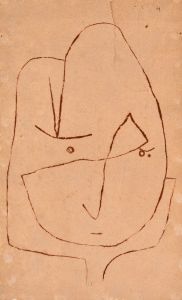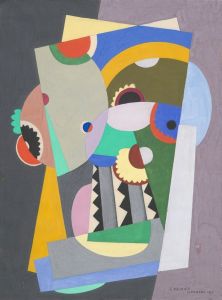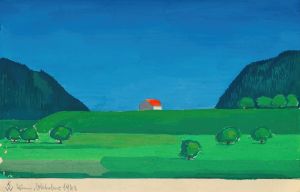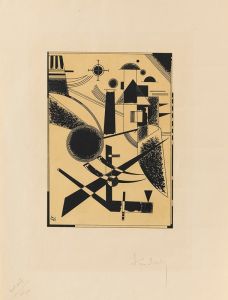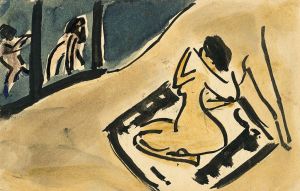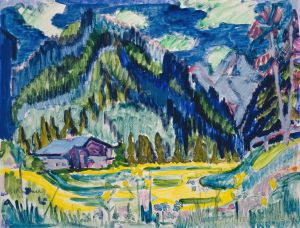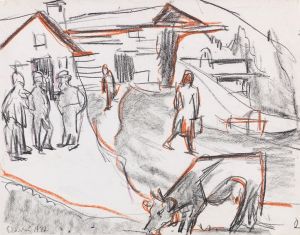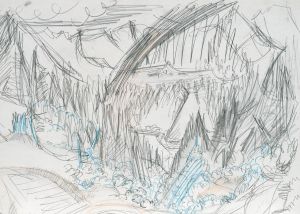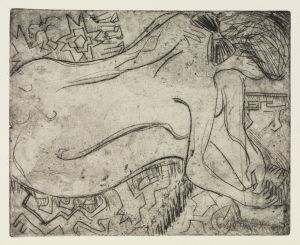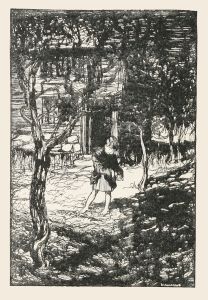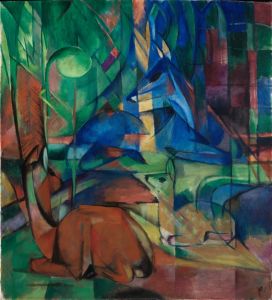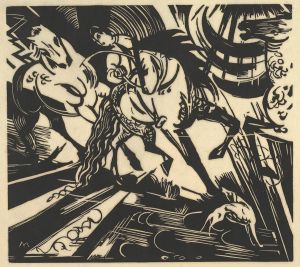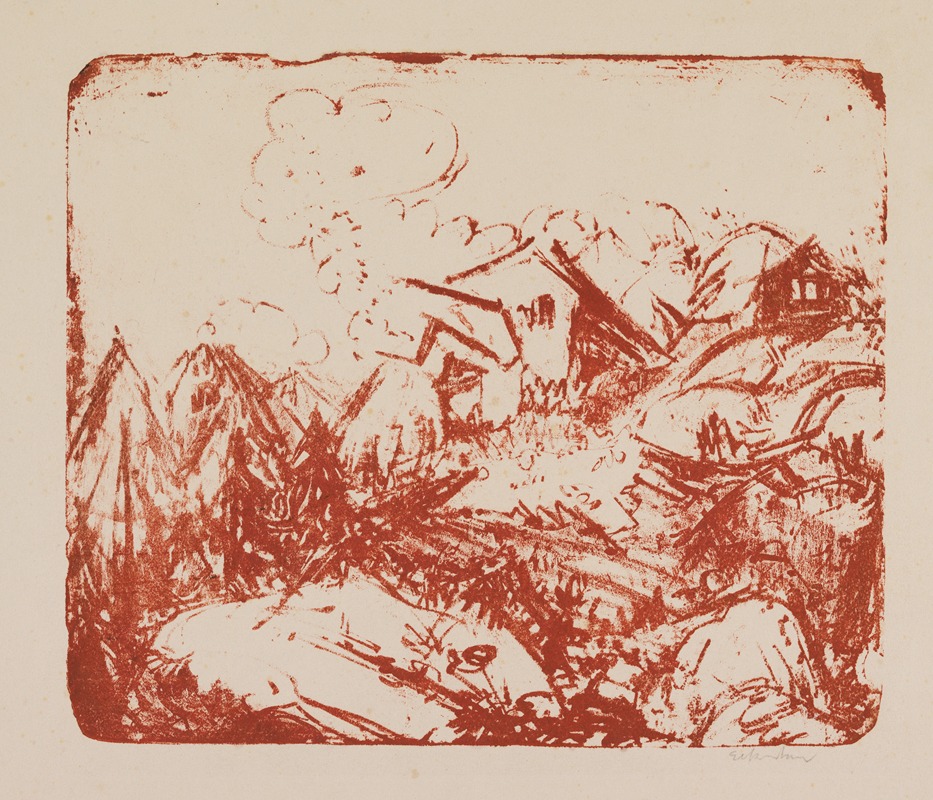
Alphütten
A hand-painted replica of Ernst Ludwig Kirchner’s masterpiece Alphütten, meticulously crafted by professional artists to capture the true essence of the original. Each piece is created with museum-quality canvas and rare mineral pigments, carefully painted by experienced artists with delicate brushstrokes and rich, layered colors to perfectly recreate the texture of the original artwork. Unlike machine-printed reproductions, this hand-painted version brings the painting to life, infused with the artist’s emotions and skill in every stroke. Whether for personal collection or home decoration, it instantly elevates the artistic atmosphere of any space.
Ernst Ludwig Kirchner, a prominent German expressionist painter and one of the founding members of the art group Die Brücke, created numerous works that reflect his interest in nature, rural life, and the human connection to the environment. Among his notable works is Alphütten, a painting that exemplifies his distinctive style and thematic focus during his time in Switzerland.
Alphütten (translated as "Alpine Huts") was painted during Kirchner's later years, after he relocated to the Swiss Alps in 1917. This move was partly motivated by his desire to recover from the physical and psychological toll of World War I and his struggles with mental health. The serene and remote environment of the Alps provided Kirchner with a new source of inspiration, leading to a significant shift in his artistic focus. His works from this period often depict the rugged landscapes, traditional architecture, and rural life of the Alpine region.
The painting Alphütten captures the simplicity and harmony of life in the mountains. It portrays traditional Alpine huts nestled within a dramatic natural setting, surrounded by towering peaks and lush greenery. Kirchner's use of bold, expressive brushstrokes and vibrant colors conveys a sense of vitality and emotional resonance, characteristic of his expressionist approach. The composition reflects his fascination with the interplay between human habitation and the natural world, emphasizing the integration of the huts into their surroundings.
Kirchner's time in the Alps marked a period of relative isolation, during which he sought to distance himself from the modern industrialized world. This is reflected in Alphütten, which celebrates the unspoiled beauty of the Alpine landscape and the simplicity of rural life. The painting is also indicative of Kirchner's broader interest in exploring themes of primitivism and a return to nature, which were central to the philosophy of Die Brücke.
Today, Alphütten is recognized as an important work within Kirchner's oeuvre, representing his mature style and his deep connection to the Alpine environment. The painting is housed in a public or private collection, though specific details about its current location may vary. Kirchner's works, including Alphütten, continue to be celebrated for their innovative approach to color, form, and emotion, as well as their ability to capture the spirit of the early 20th century.
This painting remains a testament to Kirchner's artistic legacy and his enduring fascination with the relationship between humanity and nature.





